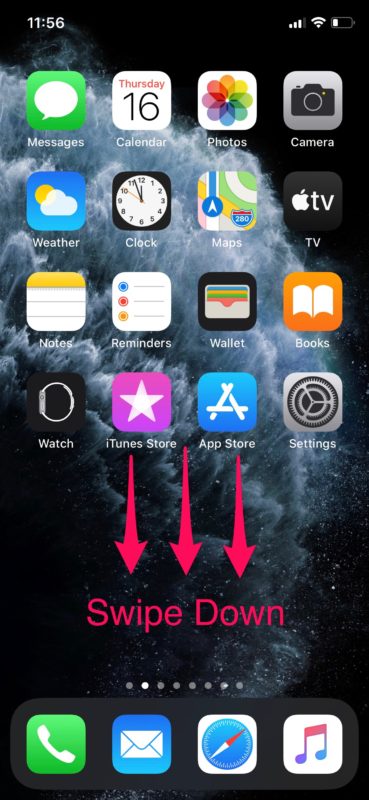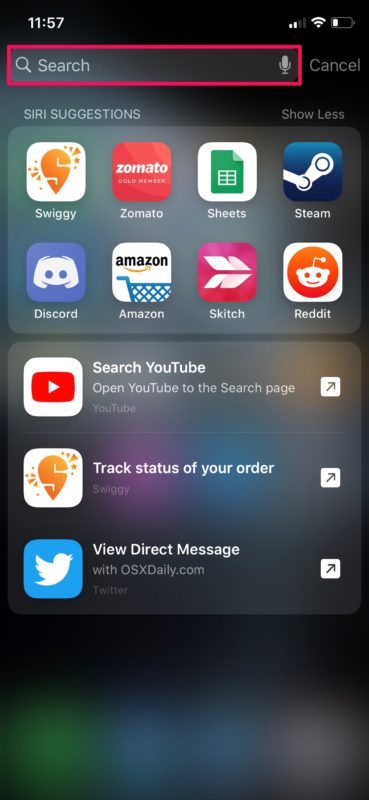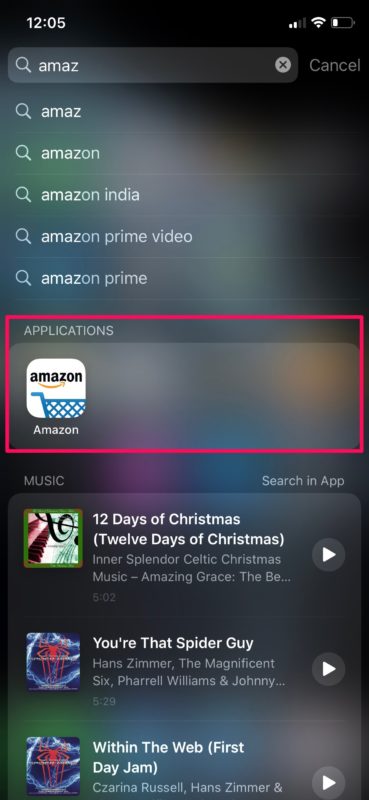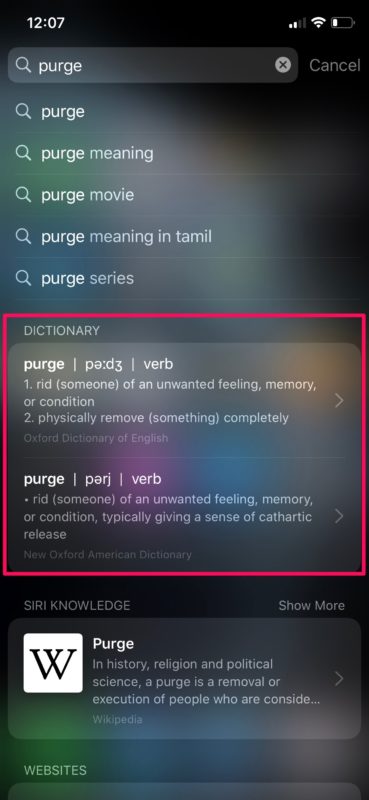How to Use Search on iPhone & iPad with Spotlight

Do you have many apps, files, emails, messages, contacts, and other data on the iPhone or iPad that you wish you could easily search through? It can be a challenge to scroll through all the home screen pages, contact lists, notes, emails, messages, and other stuff to find what you’re looking for on iOS and iPadOS, but there’s an easier way. This is exactly where Spotlight search comes in handy.
Spotlight is a powerful system-wide search feature that’s available on Apple’s iOS, iPadOS, and macOS devices like the iPhone, iPad, and Mac. It helps users find anything – files, text, contact information, emails, apps, info – that’s stored on their device, and it can even fetch results from the web. Thanks to the seamless Siri integration, Spotlight is capable of displaying suggestions based on your search history and updates results as you type too.
If you’re unfamiliar with Spotlight search on iPhone and iPad, then read on as we explain how you can use the Spotlight search feature on iPhone, iPad, and iPod touch.
How to Use Search on iPhone & iPad with Spotlight
There are two ways to access Spotlight search on the iPhone and iPad, though one way is noticeably faster than the other. Let’s take a look at how you can access and start using Spotlight on your device:
- The quickest way to access Spotlight search would be by swiping down on the home screen, this opens the keyboard automatically and eliminates the need for a second input. You can also access Spotlight by simply swiping right on the home screen of iPhone or iPad, this takes you to the “Today View” section with the search bar on top.

- If you’ve swiped right on the home screen to access Spotlight, you’ll have to tap the search bar once to bring up the iOS keyboard.

- Type what you want to find on your device, you can search for anything that’s stored on the device. If you’re trying to find an app that you want to use, simply start typing in the search bar, and the suggestions will start showing up right below it. The app will show up under the “Applications” section of results.

- Search also allows you to look for things like your Contacts. Just start typing a contact’s name and it will show up either in the suggestions or results as a card. You’ll be able to text or make calls right from this menu.

- If you’re an Apple Music user, you can quickly search for songs using the search bar and start playing it without even having to open the app. Likewise, you can also search for YouTube videos by adding “youtube” to the search term.

- Now, if you’re interested in finding something on the web, let’s say you want to look up the meaning for a word, Spotlight would fetch you dictionary results similar to what’s shown in the screenshot below.

Now you know how how to get started with Spotlight search on your iPhone and iPad to find stuff on your device.
Try it out by searching for apps, emails, messages, notes, contacts, and just about anything else that’s stored on your iPhone or iPad.
From being able to find apps on your device to searching literally anything on the web right from the comfort of your home screen, Spotlight has a lot to offer and is a great way to navigate the depths of an iPhone or iPad. Once you get used to this feature, you may never want to scroll through home screen pages to find apps, a giant address book in Contacts, or even opening your browser to fetch web search results quickly. Spotlight is quite powerful so try it out and use it enough to master it, you’re sure to appreciate the feature.
Apart from all that, there are some fun and useful things that you could do with Spotlight. You could find restaurants with just emojis on your iPhone or iPad. Let’s say you type in the pizza emoji, Spotlight would fetch you results of restaurants that serve Pizza. Kind of neat, isn’t it?
Additionally, if you want to quickly convert currency, you don’t really need to open your web browser. Just type in the currency value as you normally would on Google, and Spotlight would display the most accurate exchange rate.
And as was alluded to earlier, you can also search Wikipedia and the web from Spotlight too, so even if something isn’t on your device you can still look for it or seek it out.
Spotlight has a ton of features, and there’s also a capability called Siri Suggestions that some users may like or dislike, if you’re not a fan of that you can turn off Siri suggestions in search and you’ll stop seeing things that the virtual assistant isn’t being used for Spotlight searches.
As mentioned earlier, Spotlight is also available on macOS and functions in a fairly similar way. So, if you own a MacBook, iMac or Mac Pro, you might be interested in learning how you can get information regarding anything using Spotlight on your Mac.
We’ve covered a ton of Spotlight topics over the years for the Apple ecosystem, browse around those articles and you’re sure to learn something new.
What do you think of Spotlight search feature oo iPhone and iPad? Do you swipe down or swipe right to access it? Has it changed the way you access apps and search for information? Let us know your experiences, thoughts, and opinions in the comments!








Thanks for sharing some of the features I didn’t know about! Very useful! Thanks!
Spotlight does not include the search field when i swipe down on my ipad mini latest version. I only get the shortcut panels without the search field at the top. Your article makes no mention of that circumstance.
You have either not recognized the most important difference between the spotlight versions macOS on the one hand and iOs / iPadOS on the other hand or you underestimate the relevance: Spotlight iOs / iPadOS cannot index! On my Mac, I can find any document, no matter how old or under what name, in a matter of seconds. Spotlight has indexed the content of documents and can search for keywords in the document. My iPadPro 2020 cannot do that. Really annoying!
Spotlight is very full featured. Thanks for illuminating some of its more hidden gems. One thing I wish for, is a way to find WHERE an app resides across my 15 home screens. Swiping and eyeball searching is troublesome, and if the app is buried in a sub-folder, it’s virtually impossible. Any ideas for this?